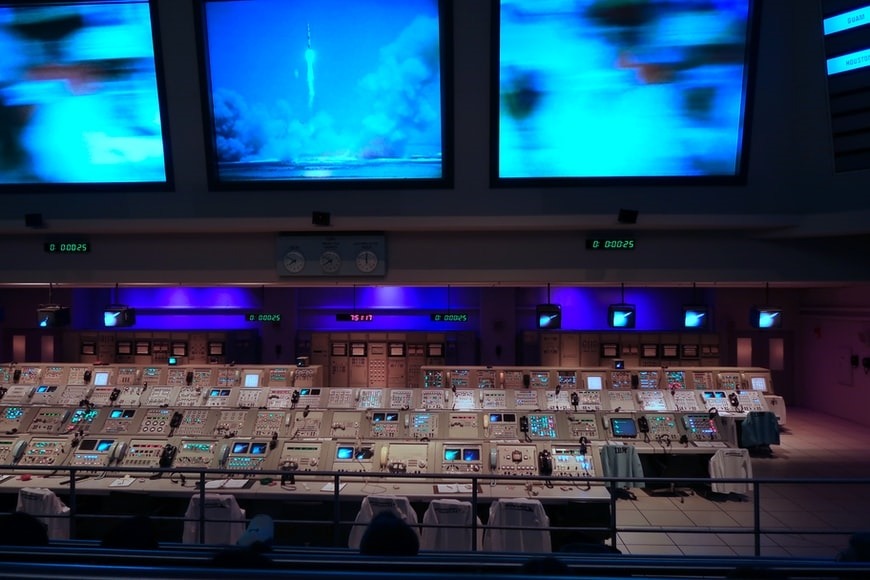
Video walls are at the cutting edge of information technology, with more and more users beginning to realize that this technology can give their business a huge boost with them. We all could use a little more clarity when it comes to information flow in our businesses, so video walls have come to our rescue in the hopes that we can benefit from clearer communication and a seriously cool AV set-up.
But what is a video wall, and how do they even operate? IF you’re scratching your head, don’t worry, you’re in good company. At DEXON, we make it our business to know the ins and outs of video walls because we understand how you can personally benefit from them.
With that in mind, we’ve put together this guide to give you the lowdown on what business goals can be associated with using a video wall. We’ve also compiled a comprehensive guide to what a video wall is, how they operate, how many businesses use them and why they’re beneficial.
So, whether you’re a total AV geek, or just starting out in the industry, we’ve got you covered.
Ready?
Let’s go
What is a video wall?

Before we get too excited, it’s quite important that we solidify the facts. A video wall is a collection of multiple screens that can display one or multiple coherent images where the quality is the sum total of each screen’s resolution. A video wall system needs video wall controllers as well.
Video walls vary in size, so if you’ve got a tiny office, you need not worry. The beauty of video walls is that they are an entirely customizable technology, so you can fit your experience around your needs.
This technology is useful for so many reasons, we physically don’t have enough words to tell you, but we can tell you that even if you just want a video wall to up the level of your home cinema experience, or you need them for some serious business, you’re in luck.
How do they work?
Video walls operate on your terms, so if you want to add lots of sophisticated kit, then go right ahead. Typically, video walls operate in conjunction with other systems to optimize quality, handle data and create effects. Here is a guide to the components at play when operating a video wall.
Video processors
Video processors are pretty critical to your video wall experience. These handy systems process input signals and distribute them to your video wall, meaning you can stream the latest movies, or isolate individual screens to give your next video conference an edge or present different information from one place.
Types of video walls
Rear-projected cubes: Rear projection cube video walls consist of multiple little cubes to make one big screen. These are pretty high performance, so if you need a 24/7 operation, then this is a good option for you.
LCD display: LCD displays are probably the most common and cost-friendly video walls out there. They consist of multiple panels of LCD screens to create one big image, but they do interrupt quality with some harsh borders and are not the most energy-efficient options out there.
LED display: LED display video walls consist of large screens made with LED lights to provide a high-performance and bright display. This technology is pretty useful for large displays in museums, shop fronts of stadiums.
How many businesses use video walls?
To answer this question, we should really look at how the video wall market has soared in recent years.
The video wall market was estimated to be valued around the $15 billion mark in 2018, but is set to increase to a whopping $36.6 billion by 2026. That’s quite the increase, and we can only assume this is because of the amazing benefits they have to offer.
Why are they beneficial?
Video walls are super beneficial because they can be used in pretty much any setting. So many industries benefit from video walls because of their unification, engagement and operation capabilities. You may have even seen a video wall once or twice in your life without even realizing it. Cast your mind back to the last time you watched a big sports game. Did you see a huge screen streaming the goings-on of the playing field? Well, there’s a good chance that it was a video wall.
Here’s a guide to the industries that benefit from a video wall:
Transport
We all know that the transport industry could benefit from a bit more clarity here and there, and it’s no secret that trying to find the correct departure board in a sea of people is just downright painful sometimes. Thanks to the beauty of video walls, scrabbling for terminals and train times is a thing of the past.
With a video wall, all information can be isolated and displayed in a single space, so the sea of humans trying to find their correct train platform only have to congregate in one space. This is a prime example of the centralization of information.
Entertainment
Got a home cinema night with your buddies coming up? Fear not, video walls can give you that movie theater experience, just without the tickets and horrendously overpriced popcorn. Video wall technology can stream web content onto your wall through a processor, so you don’t have to worry about scratched DVDs ruining your experience.
Aerospace
Raise your hand if the idea of NASA’s mission control center makes you think of a huge screen with lots of people sitting around it tracking spaceships. If you do picture this, congratulations, you’ve pictured a video wall. Live tracking is one of the many benefits of video wall technology; and with the ability to process huge amounts of data, you can really keep one eye on outer space with this technology.
What business goals can be associated with using a video wall?
So, now we’ve got the nitty gritty, let’s have a quick run through of the many benefits of employing video walls to be a tool in your business development bid. We know that everyone’s business development goals are different, but we also firmly believe that all businesses can benefit from these positives. Let’s have a look at business goals that can be associated with using a video wall:
Higher engagement
Let’s be honest, we could all benefit from higher engagement rates at work. We don’t judge, we know that staring at your inbox for hours on end can be pretty sleep inducing, but you can kiss this goodbye with a video wall. Video walls can be used to broadcast critical information for the masses, so you don’t all have to huddle around your monitors waiting for important announcements. They’re also staggeringly cool to look at, so who wouldn’t be engaged by them.
Bring in new clients
Investing in a video wall puts you in pole position in the IT industry, which is impressive to clients. When your clients step into your office space, they’ll see a company that takes their means of communication seriously, which could substantially increase your business ventures. Let’s be upfront, increasing your business ventures and multiplying your streams of income is at the core of everyone’s business goals.
Aids your conferencing
Let’s be honest, conferencing can be pretty boring from time to time. But with video walls, conferences can turn from glorified lectures into an interactive experience. A video wall gives you the opportunity to unite both virtual and in-person attendees and utilize sophisticated technology to create engaging displays and informative presentations.
And there you have it. You’re now a certified know-it-all about video walls.